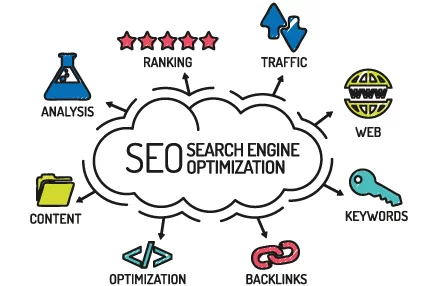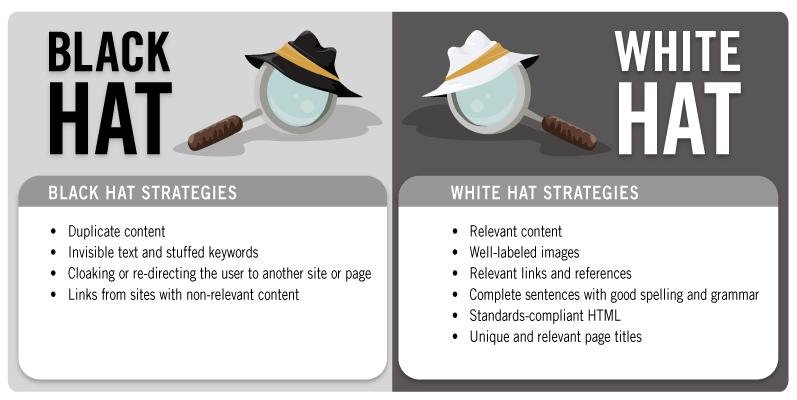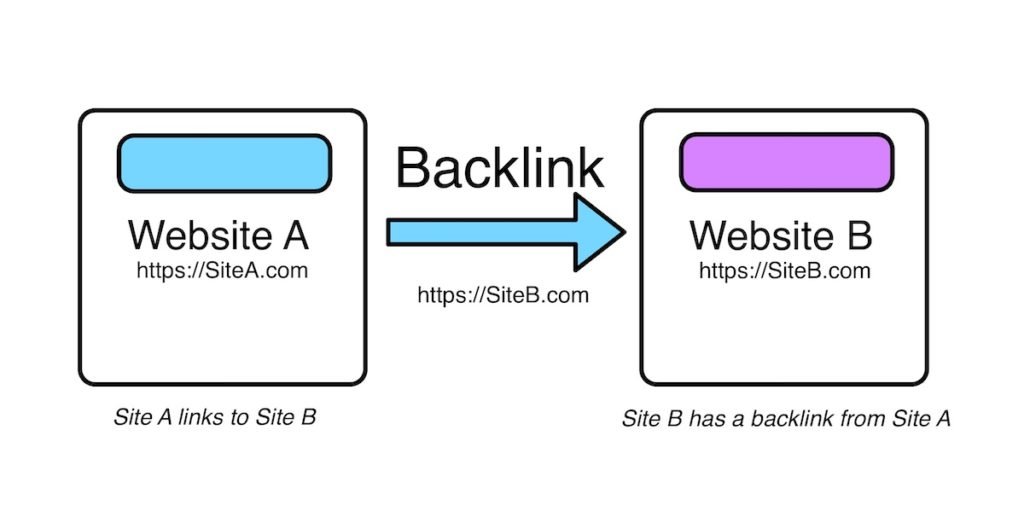How Do Search Engines Work?
Most of us are familiar with the basic concept of a search engine: you type in a few words, hit search, and within seconds you’re presented with a list of answers. But considering the sheer scale of the internet—with billions of websites and pieces of content—how do search engines consistently match queries with the most relevant results?
The answer lies in how search engines crawl, index, and rank content. And importantly, there are strategies you can implement to make your website more attractive to these systems—so your site becomes the one that’s delivered as a top result. This process is known as search engine optimisation (SEO). Done correctly, it leads to increased traffic, improved engagement, and stronger conversion rates. So how do you tap into this opportunity?
The History of the Search Engine
Modern search engines are incredibly advanced, with Google leading the way. But it all began back in 1990, when the internet was just beginning to emerge for public and commercial use. The first recognised search engine was Archie, a tool that indexed FTP archives in a directory format. Though basic by today’s standards, it laid the groundwork for what would eventually evolve into the search engines we rely on today.
In the early days, search engines functioned mostly as directory listings, and Yahoo! quickly rose to prominence. Originally starting as a curated list of favourite web pages, Yahoo! evolved into a searchable directory. During much of the 1990s, it served as a valuable tool for navigating the early stages of the world wide web.
However, directory-based search engines began to show limitations as the internet expanded. Enter Google.
Google began in 1996 and quickly positioned itself as a serious competitor to Yahoo! by introducing a fundamentally different approach. Rather than relying solely on manually curated lists, Google developed an algorithm that ranked search results based on citation notation—the early version of backlinking. Essentially, if one website referenced another, it acted as a “vote” of authority, boosting that page’s ranking in the search results.
This became the foundation of Google’s search dominance. By combining crawling, indexing, and link analysis, Google evolved far beyond the capabilities of earlier engines. Over time, it added layers of sophistication—including artificial intelligence, machine learning, and additional features like Google Maps, Google Images, and Google News.
Today, Google holds over 90% of the global search engine market share and continues to lead through constant innovation, leaving former giants like Yahoo! and other search engines far behind.
How Do Google Search Engine Algorithms Work?
At their core, search engines perform three primary tasks: crawling, indexing, and ranking. While Google pioneered many of the processes behind these functions, other search engines have since adopted similar methods to stay competitive and deliver relevant results to users.
Here’s how each of these components works:
Web Crawlers and the Indexing Process
Search engines use automated bots—commonly referred to as crawlers or spiders—to explore the web and locate content. These crawlers are constantly scanning websites for new or updated information, with a particular preference for fresh, original text. The content they look for can range from web pages and blog articles to videos and images.
However, for any of this content to be discoverable in search results, it needs to be connected through links—establishing relationships between pages. Crawlers follow these links to understand the context and relevance of content across the web. By mapping out these connections, search engines can better assess how pages relate to one another and assign a level of importance or priority based on these relationships.
Indexing
Once content is found by web crawlers, it’s stored in an index—a massive database where all discovered pages, media, and associated links are catalogued. For your website to appear in search results, it must first be indexed. Without being part of this index, your content won’t be accessible to users through search engines.
However, simply being in the index doesn’t guarantee visibility. Where your site appears in search results depends on a range of ranking factors (more on this below).
How Google Ranks Web Pages?
Ranking is arguably the most critical step for website owners and digital marketers. Once your content is indexed, Google’s algorithm determines which pages are the most relevant and valuable for a given search query—and ranks them accordingly.
When someone enters a search term, Google scans its index to deliver the most suitable and high-quality results. The higher your site is ranked, the closer to the top of the search results it appears—which means greater visibility and more potential traffic.
To achieve higher rankings, your goal should be to create content that is not only relevant to your audience’s queries but also rich in value. This includes ensuring your pages are accessible, well-structured, and regularly updated, with strong internal and external linking strategies.
Context in Searches
When two users type the same term into a search engine, they don’t always receive the same results. That’s because search engines take into account a variety of contextual factors, such as location, search history, device settings, and more. These elements influence how results are tailored to each individual’s unique situation.
Search engines are evolving rapidly, incorporating increasingly advanced techniques to understand user intent. For brands aiming to rank content effectively, this creates an added layer of complexity, as it’s no longer just about keywords—it’s about context.
With the growing integration of artificial intelligence in search engine algorithms, these platforms are becoming highly adept at delivering personalised results. By leveraging a wide range of contextual signals—far beyond just the words typed into a query—search engines can now better match users with content that aligns with their specific needs, behaviours, and preferences.
Why Am I Not Showing Up in Searches?
If your website isn’t appearing in search results, you’re missing out on valuable organic traffic—which can directly impact your visibility, leads, and revenue. So, what’s causing the issue, and how can you resolve it?
Here are some of the most common reasons your site might not be showing up—and what you can do to fix them:
- Your Site Is Brand-New
New websites take time to be discovered by search engines. While some sites are crawled within a few days, it can take up to six months for others to appear in search results. Patience is key—but there are also steps you can take to speed up the process:
- Submit your sitemap through Google Search Console
- Build backlinks from high-authority websites
- Publish high-quality, original content, including blogs and articles
- Create an RSS feed to signal fresh content to search engines
These actions help Google recognise your site as active, trustworthy, and worth indexing.
- Your Site Is Blocking Search Engine Crawlers
In platforms like WordPress, a single checkbox can prevent search engine bots from crawling your site. While this setting is useful for private or restricted pages, it should be disabled for public-facing content.
If search engines can’t access your site, your pages won’t be indexed—no matter how good your content is. Ensure that crawler access is enabled and that your robots.txt file isn’t blocking key areas of your site.
- Your Site Has Poor Navigation
If your site is difficult to navigate, search engines—and users—won’t know how to interpret your content. Poor structure can limit crawling, reduce indexation, and frustrate visitors, all of which affect your rankings and conversions.
To fix this:
- Ensure your site has a clear, logical structure
- Use internal links to guide users through content
- Submit a well-structured XML sitemap to Google
A well-organised website supports better user experience and enhances SEO performance.
- Your Site Has Been Penalised by Google
If you’ve used questionable tactics—like duplicate content, spammy backlinks, or keyword stuffing—you may have received a Google penalty. These penalties push your site down in rankings, or remove it from results altogether.
Google’s algorithms are designed to detect these tactics, and once flagged, recovery can be time-consuming. Avoid black hat SEO practices and focus on genuine, ethical optimisation techniques.
What Is Search Engine Optimisation—and How Can You Use It?
Search engines like Google, Bing, and Yahoo! use complex algorithms to determine which websites offer the most value and relevance for user queries. SEO—search engine optimisation—is the process of making your website more attractive to those algorithms.
To rank higher in search results, your site needs to be seen as a source of authority, trust, and useful content. That begins with identifying and optimising for the right keywords—the terms your target audience is actively searching for.
What You Need to Optimise for Search Engines: Key Content and Indexing Elements?
To ensure your website performs well in search engine rankings, you need to optimise both the content on your site and the technical elements that allow it to be properly crawled and indexed. Here are the essential components to focus on:
Optimised URLs
Your page URLs should be concise and include relevant keywords that reflect the page’s content. For instance, using the example from earlier, a domain like www.tamworthplumbing.com.au clearly signals relevance to both users and search engines.
Optimised Images and Media
Images and videos on your site should include descriptive file names, captions, and alt text that incorporate relevant keywords. This not only supports SEO but also improves accessibility and helps your content appear in image search results.
High-Quality Inbound Links (Backlinks)
Acquiring backlinks from reputable, high-authority websites helps boost your site’s credibility in the eyes of search engines. These links act as votes of confidence, indicating that your content is valuable and trustworthy.
Internal Linking Structure
Use internal links to connect related pages within your website. This improves user navigation, helps spread link equity throughout your site, and makes it easier for search engines to crawl and understand the structure of your content.
Submit a Sitemap to Google
As mentioned earlier, submitting your XML sitemap through Google Search Console allows search engines to discover and index your content faster and more efficiently. A well-structured sitemap ensures that no important pages are missed.
Improve Site Speed
Page load speed is a confirmed ranking factor for Google. Faster-loading sites provide a better user experience and are more likely to rank higher. Tools like Google PageSpeed Insights can help you identify and fix speed-related issues.
Mobile Optimisation
With the majority of users now browsing on mobile devices, Google uses mobile-first indexing. Your website must be fully responsive, with layouts and content that adjust seamlessly to smaller screens.
Regularly Publish Fresh Content
Search engines prioritise websites that consistently offer new, relevant, and high-quality content. Starting a blog is an excellent way to publish keyword-rich articles that answer your audience’s questions and keep your site active and engaging.

How Do I Improve My Rankings on a Search Engine?
There are certain tactics that some websites use in an attempt to climb higher in search engine rankings—but these methods violate Google’s standards and almost always result in penalties. Known as ‘black hat’ SEO strategies, these shortcuts might promise fast results, but they can severely damage your website’s credibility and visibility in the long run.
What Are Black Hat SEO Techniques?
As previously mentioned, one of the most common black hat practices is keyword stuffing. This could appear as large blocks of text containing location names or phone numbers repeated with no clear context—or phrases unnaturally repeated throughout the content to the point where it becomes distracting or unreadable.
Sometimes, keyword stuffing is more subtle. For example, it may be found in thin content—pages that exist purely to hold keywords but offer little to no real value to the user. Whether blatant or discreet, this kind of content does not serve the end user, and that’s exactly what Google’s algorithms are designed to detect and penalise.
In short, all content must provide genuine value to your audience—every time.

Cloaking, Redirects, and Paid Links: SEO Tactics to Avoid
Cloaking is another deceptive SEO tactic that should be strictly avoided. It involves displaying one version of content to users, while showing a completely different version to search engine crawlers. This tactic is typically used to hide spammy or irrelevant content from Google while tricking users into viewing it—an approach that directly violates Google’s Webmaster Guidelines.
Similarly, misleading redirects are heavily discouraged. This happens when a user clicks on a link expecting to land on one page but is instead secretly redirected to a different destination. When websites hide these redirects from search crawlers, it’s seen as a clear attempt to manipulate rankings and deceive both users and search engines—leading to penalties.
Paid Backlinks: A Risk Not Worth Taking
While purchasing backlinks may seem like a quick way to build authority, it’s a dangerous shortcut. The only backlinks that truly benefit your SEO are those earned organically from reputable and relevant sources.
Google’s algorithms are highly effective at detecting unnatural link patterns, and services that sell links for money are often flagged. If your website is found to be participating in paid link schemes, you risk serious ranking penalties or even removal from search results altogether.
 What’s Next for Search Engines?
What’s Next for Search Engines?
So, what does the future hold for search engines? There are many perspectives on where the next big evolution in search engine algorithms will come from. One thing is certain: ongoing advancements in artificial intelligence are set to transform how we search the web in the coming years.
Some experts predict that traditional keyword-based searches may eventually be phased out, with search engines moving toward proactively delivering information based on user behaviour, preferences, and intent—even before a query is made. We’re already seeing early signs of this through targeted advertising across search engines and social media platforms.
The Ever-Evolving Search Landscape
Websites are continuously evolving, and Google is constantly updating its algorithm to provide users with more relevant, accurate, and personalised results. But just as Google once disrupted Yahoo! in the 1990s with a more advanced search model, a new disruptor could emerge to take search technology to the next level.
Only time will tell what the future holds—but staying ahead means embracing innovation, focusing on ethical SEO, and delivering true value to your audience.


